7 walk-in shower mistakes to avoid, according to experts
If you're planning on upgrading to a walk-in shower, here are the common pitfalls to steer clear of

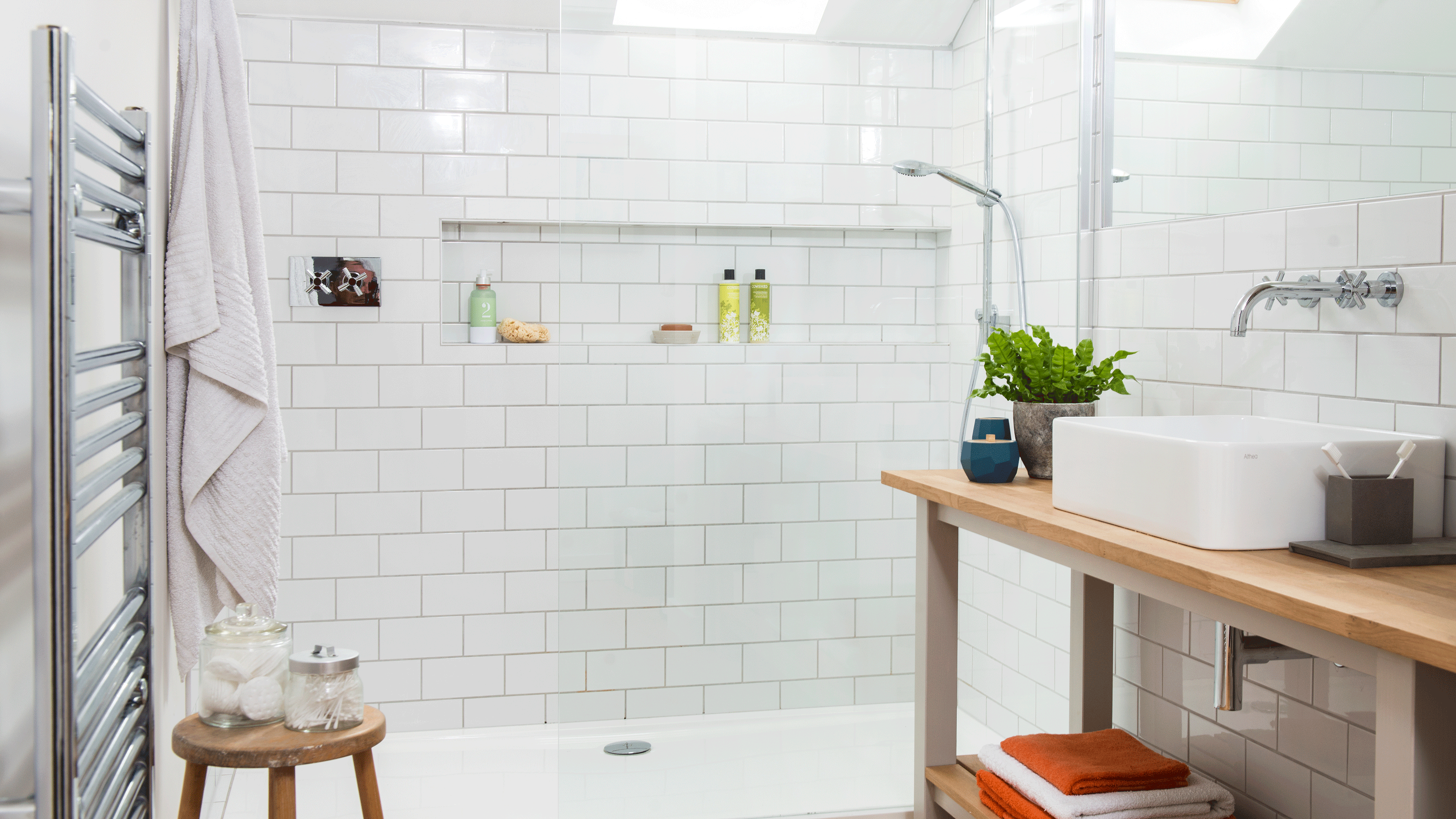
Walk-in showers are no longer the reserve of posh hotels and expensive weekend getaways. Many of us want to enjoy the luxury of walk-in shower ideas in our own home, but first, it's essential to be aware of the common walk-in shower mistakes and how to avoid them.
'With Pinterest searches for ‘Amazing showers walk-in’ having seen an increase of 395%, alongside ‘doorless shower ideas’ with a 110% increase, it’s clear that walk-in and doorless showers will be extremely popular in 2023,' says Warren Kinloch, Bathroom Expert, Bathroom Deal. 'However, there are a few things buyers need to be careful of when choosing to go with this style of shower.'
7 walk-in shower mistakes to avoid
A walk-in shower is similar to a wet room, with a few key differences - mainly that they are more contained with a screen (or two) and usually a shower tray. They can easily give your shower ideas a luxe lift, but so you can enjoy yours hassle-free, we've asked the experts to reveal the most common walk-in shower mistakes if you're planning to add one to your bathroom renovation ideas.
1. Not countering the increased moisture
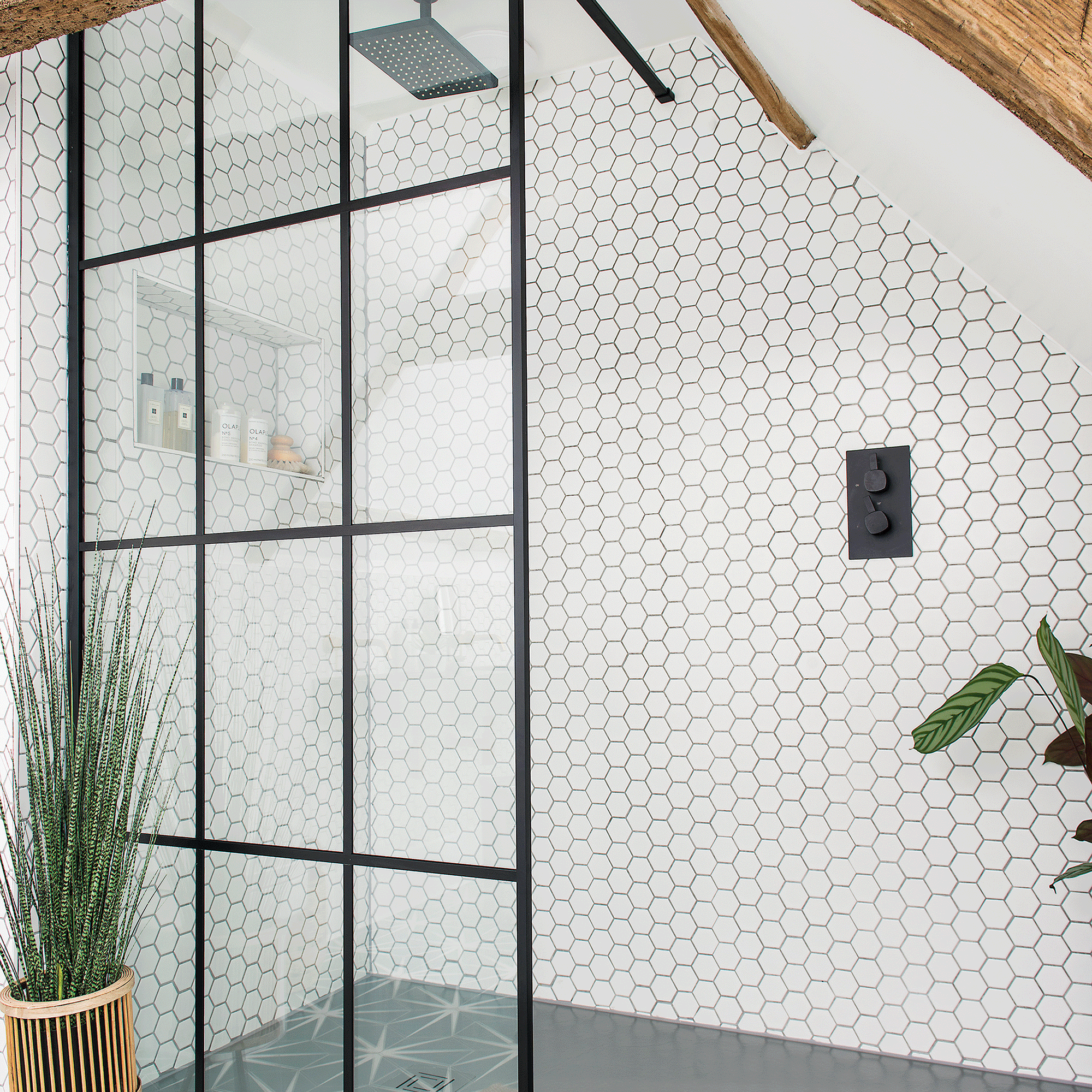
The first, and arguably the most damaging, mistake that people make with walk-in showers is not accounting for the increased level of moisture in the bathroom. A shower door or enclosure will contain a lot of the steam and humidity produced by the shower, but a walk-in shower will let this move freely throughout the room, so it's important you can counter this in some way.
'You need to ensure you have a strong extractor fan installed and/or a window you can leave open whilst showering,' says Warren. 'This will help to prevent mould and damp growth in the room.'
2. Not installing a splash guard
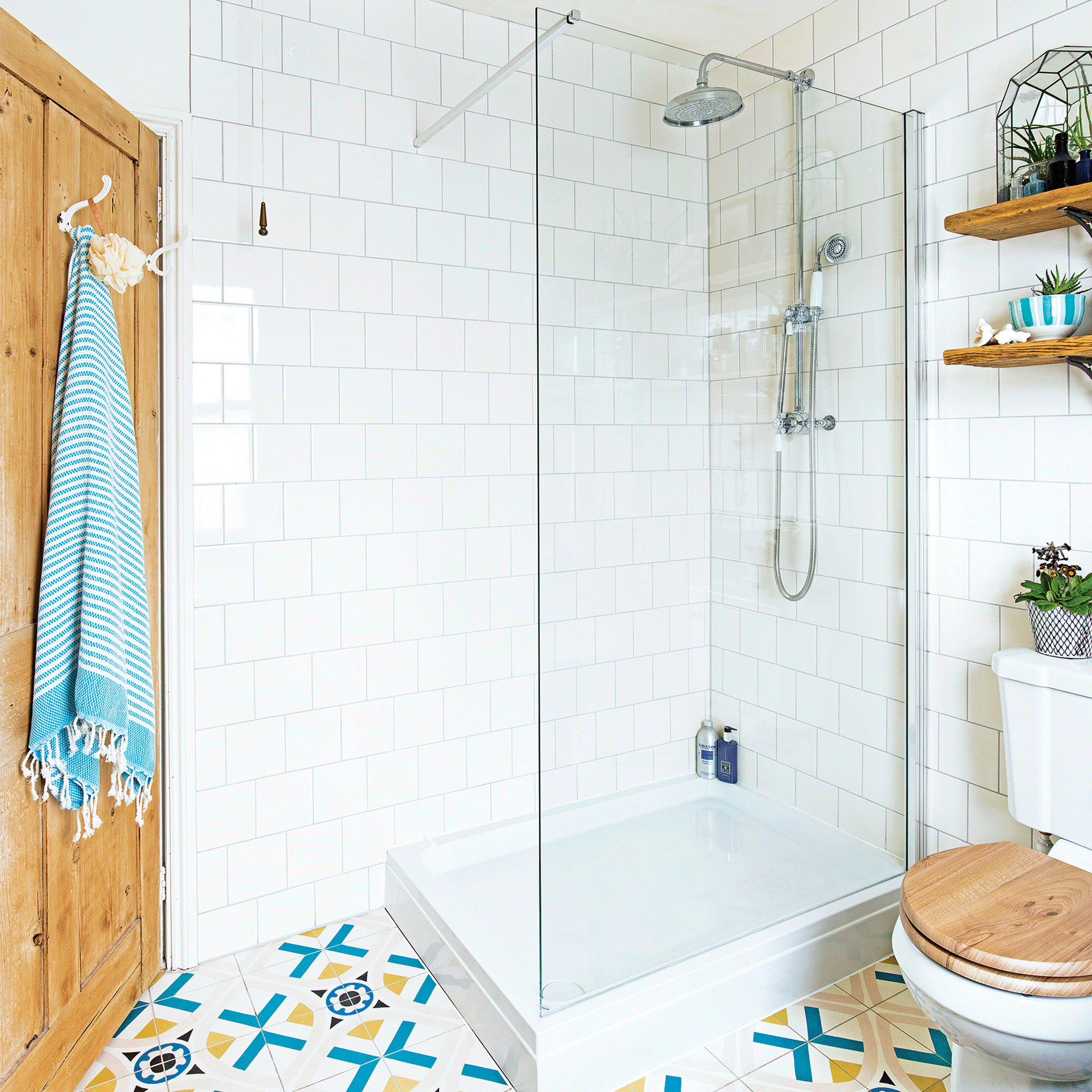
Another of the common walk-in shower mistakes is to not install some sort of splash guard to protect the surrounding floor and walls from the water. A splash guard will make the overall cost of the walk-in shower more expensive, but it's worth it. Not only will it make the need to clean around the shower less frequent, it will reduce the risk of damp and mould caused by leaking water.
3. Not insulating around the shower
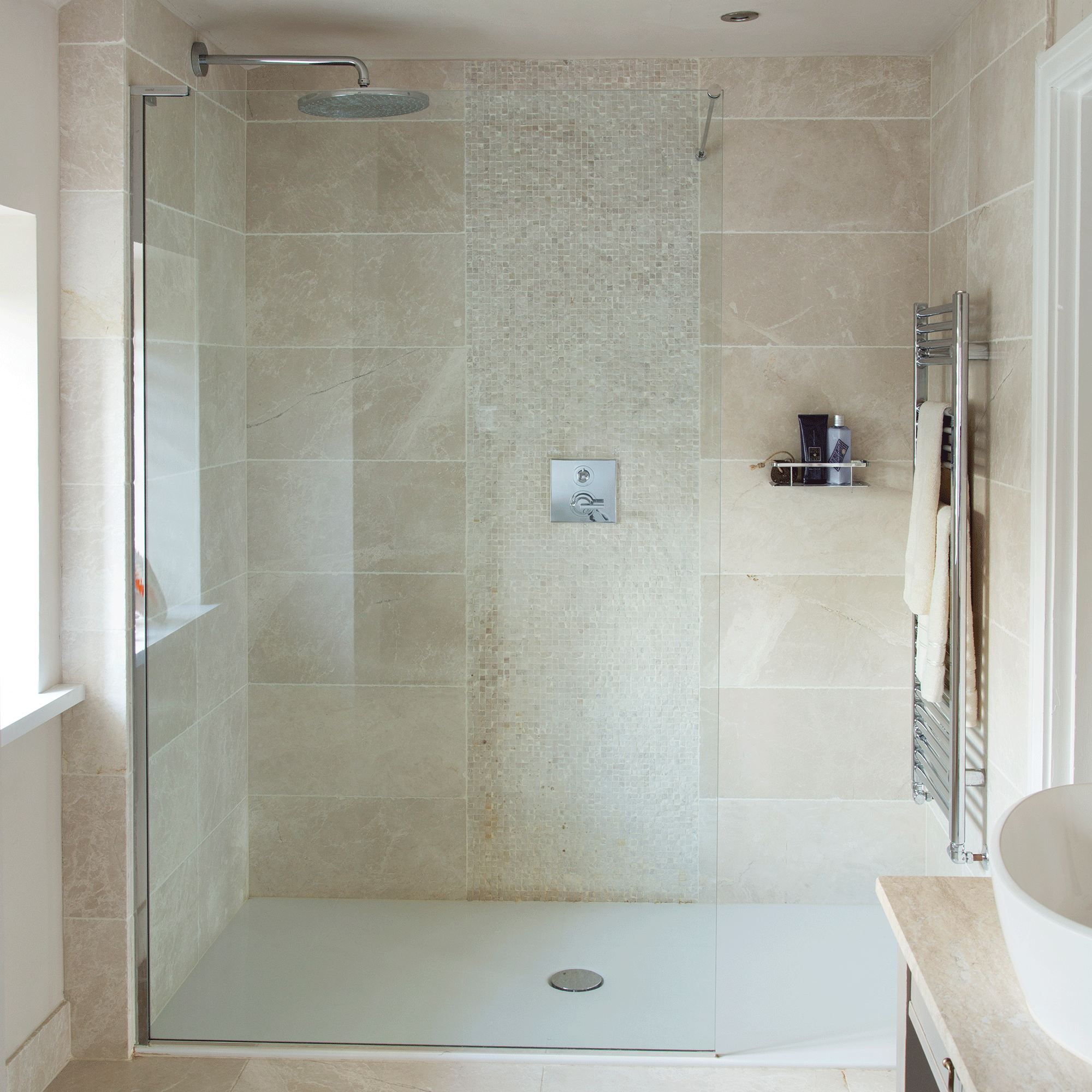
Don't make the mistake of thinking that your walk-in shower will give the same hot and steamy effect as an enclosed shower. Walk-ins are open, and therefore less likely to retain heat, so make a note of this if you like to feel really warm and toasty when showering.
Sign up to our newsletter for style inspiration, real homes, project and garden advice and shopping know-how
There are ways to counter this, though they will ramp up the overall cost of the shower. 'Installing more wall or even ceiling insulation where the walk-in shower is located is a costly, but a more permanent solution,' says bathroom expert Warren. 'Alternatively, you could install a heat source opposite the open end of the shower. There’s also the option of installing a heated bathroom floor if your budget allows for it.'
4. Misjudging the space
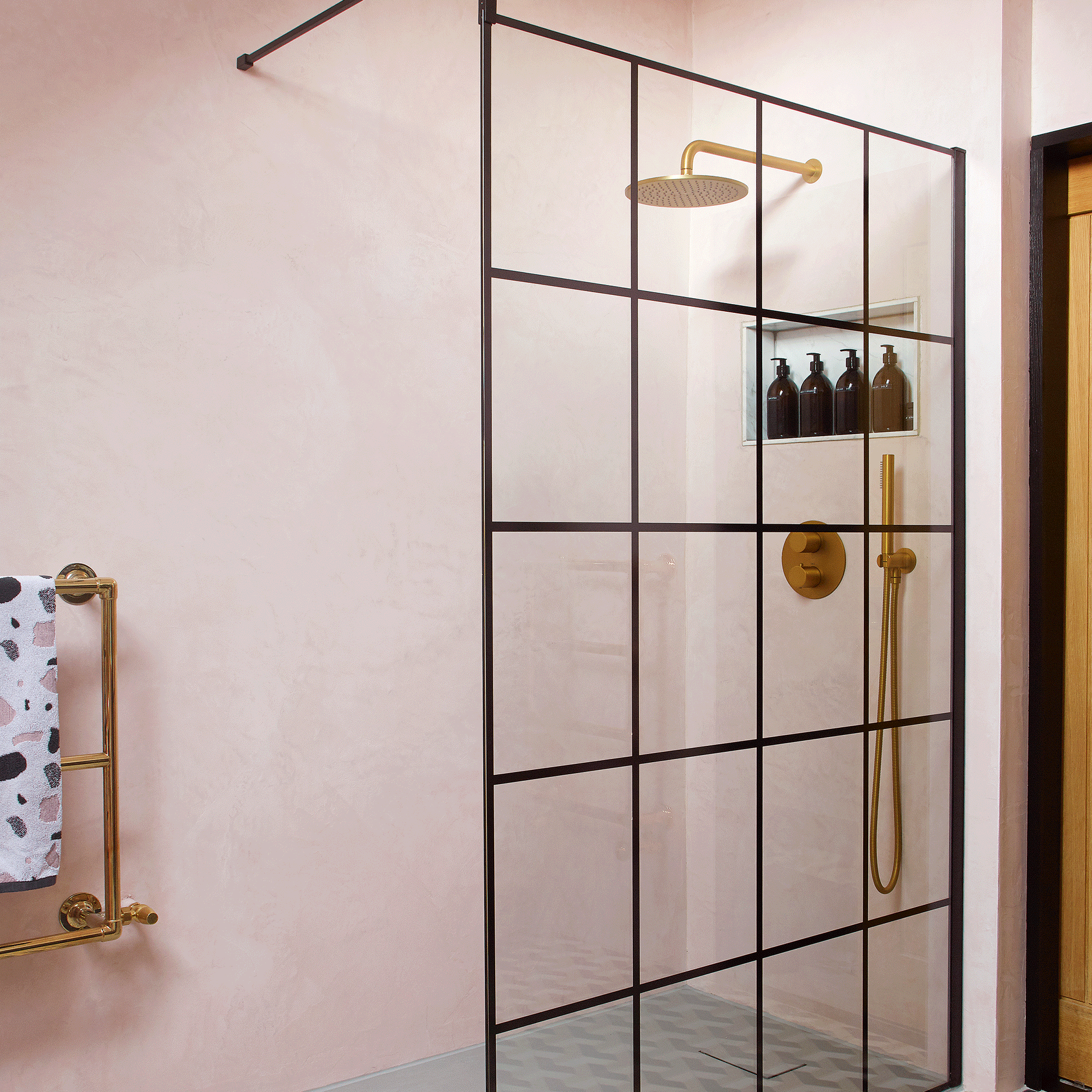
The lack of enclosing frame needed for a walk-in shower means that people assume they'll take up less space, but this is a common misconception. Experts have clarified that walk-in showers often require more space than enclosed showers, so don't make the mistake of thinking that walk-ins are a perfect small bathroom shower idea.
'Generally, a walk-in shower will require more space than an enclosure in order to avoid water splashing', confirms Shamila Iqbal, Director, Bathroom Mountain.
5. Not going for a bespoke design
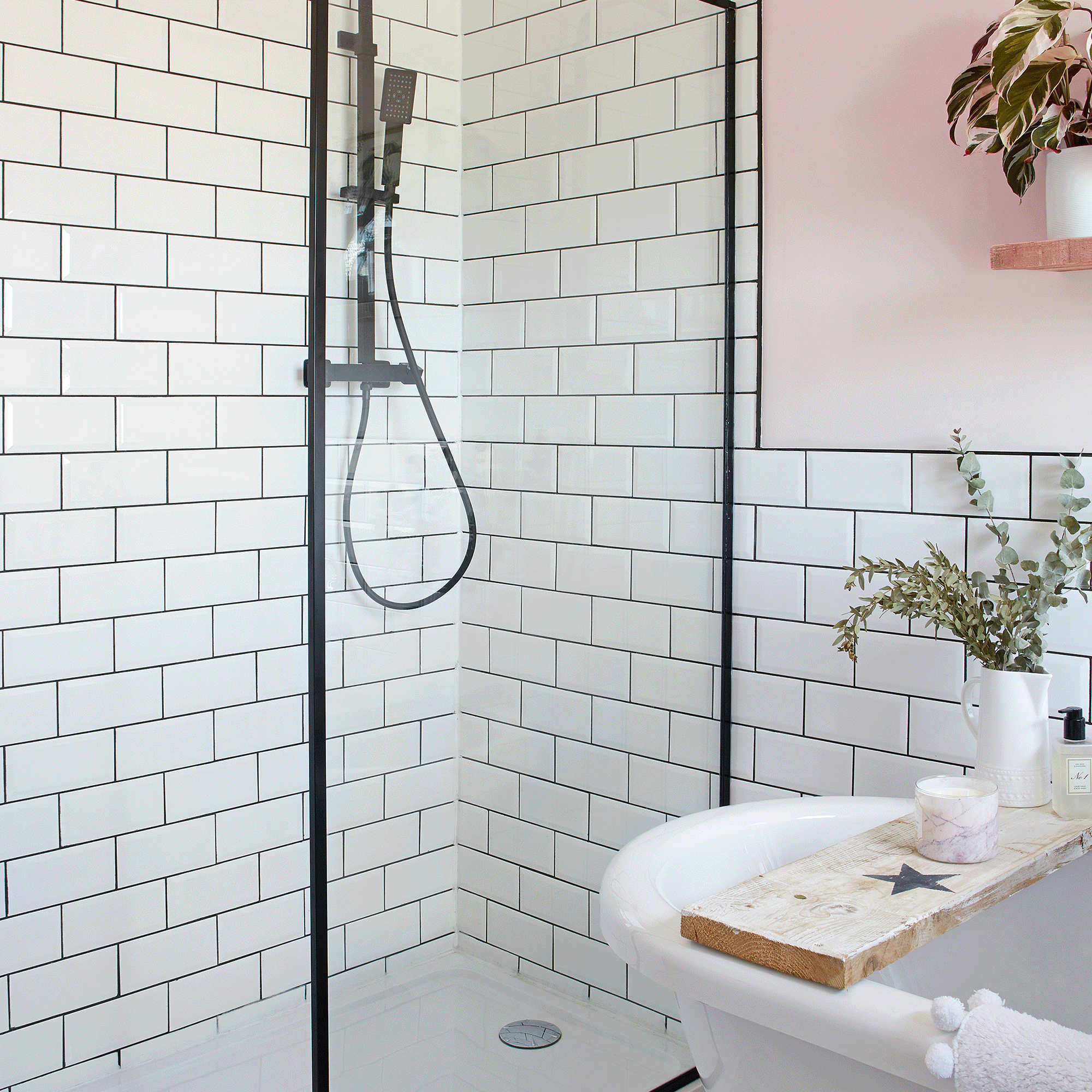
It's important to take into consideration the specifics of the area you're having the walk-in shower fitted into. You don't want to make the mistake of choosing an awkward location for the walk-in shower, such as under the eaves in a loft room.
'In such situations a standard, straight out of the box glass frame and surfaces may not be ideal, as there will be difficulty in getting it to fit flush within the space, running the danger of water leaking etc.,' says Simon Boocock, Managing Director, CRL Europe. 'Opting for a bespoke shower solution, with glassware and wall surfaces perfectly cut to size to fit the space is really the best way to create a seamless finish.'
6. Not adding slopes

'One of the most common mistakes that people make when installing a walk-in shower is not adding slopes,' says Rachel Jones, Bathroom Design Expert, MyJobQuote. 'A minimum of a 2% slope is needed within the shower space to ensure proper drainage.'
A completely level floor area is one of the more frequent walk-in shower mistakes, and will result in drainage issues. The last think you want is a mini flood every time you take a shower, so remember to account for slopes when planning.
7. Not waterproofing
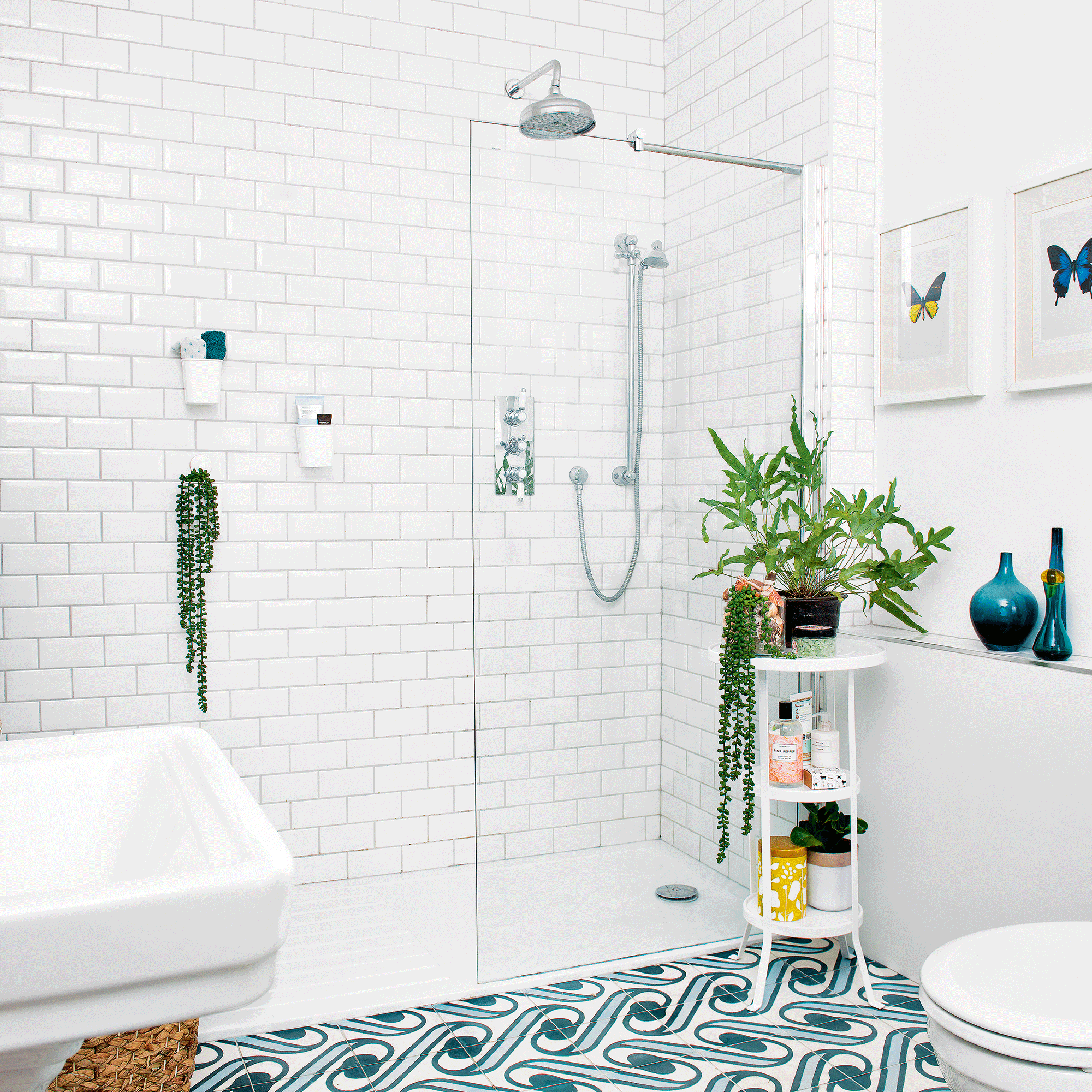
The last of the common walk-in shower mistakes is lack of waterproofing around the shower. In addition to your shower tile ideas, the tiles on the surrounding walls and floor need to be able to withstand the onset of water, otherwise your walk-in shower won't last more than a couple of years. There are a few waterproofing options that will help you avoid this.
'Due to the construction of a walk-in shower, proper waterproofing is absolutely necessary and is a required element of the construction', explains Rachel. 'Insulation mats or liquid foil are great examples of materials that can be used for sealing. In the corners of the shower space, it’s best to use specialised elastic tapes for waterproofing.'
What are the cons of a walk in shower?
The main con of a walk-in shower is the increased level of humidity in the bathroom. Walk-ins give the steam from the shower free reign, which leads to increased moisture and if not taken care of, damp and mould. This will be more of an issue for small bathroom ideas, especially if there isn't a window. A good extractor fan will help to disperse the increased moisture, so it's worth having one installed if you don't already.
Bathroom expert Paul says to avoid potential downsides, the key is to plan ahead so you can avoid the common walk-in shower mistakes. 'Whether it's opting for a large walk-in shower over a bathtub or positioning bath faucets in the wrong position that can be uncomfortable or hazardous of children, these choices can have a huge impact as families expand and homeowners age.'
Is it a good idea to have a doorless shower?
'A walk-in shower is a wonderful way to furnish your bathroom, a way of dedicating a bit of space to your personal time-out every day', says Paul, GROHE. 'Even in small bathrooms, a walk-in or doorless shower feels spacious and elegant.'
Aside from feeling a little more luxurious, walk-in showers are practical too. They're ideal for people with limited mobility, as there's no need to step up or over anything to access them. Walk-ins also offer a degree of flexibility; they can be installed either with a shower tray or directly over tiled water drainage if you prefer.
'The spaciousness of a walk-in shower means that they are also easy to clean', says Paul. 'The nooks and crannies where dirt builds up in stand-alone or in-bath showers are cut down with a streamlined walk-in shower.'
If you are planning a renovation make sure you keep these tips in mind.

Katie has been writing freelance since early 2022, specialising in all things homes and gardens, following achieving a Masters in Media and Journalism. She started out writing e-commerce content for several of Future’s interior titles, including Real Homes, Gardeningetc, Livingetc, and Homes and Gardens. Since then she’s been a regular contributor on Ideal Home’s digital team, covering news topics, how-to guides, and product reviews.